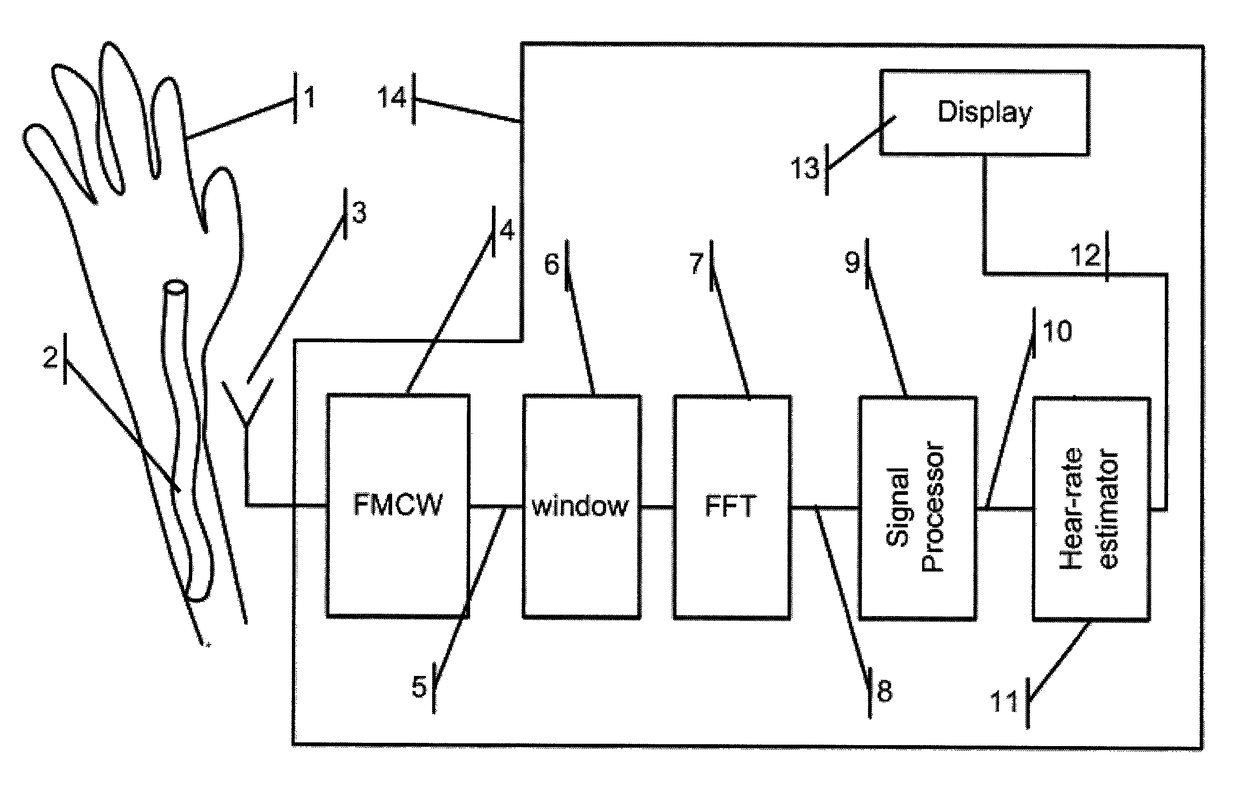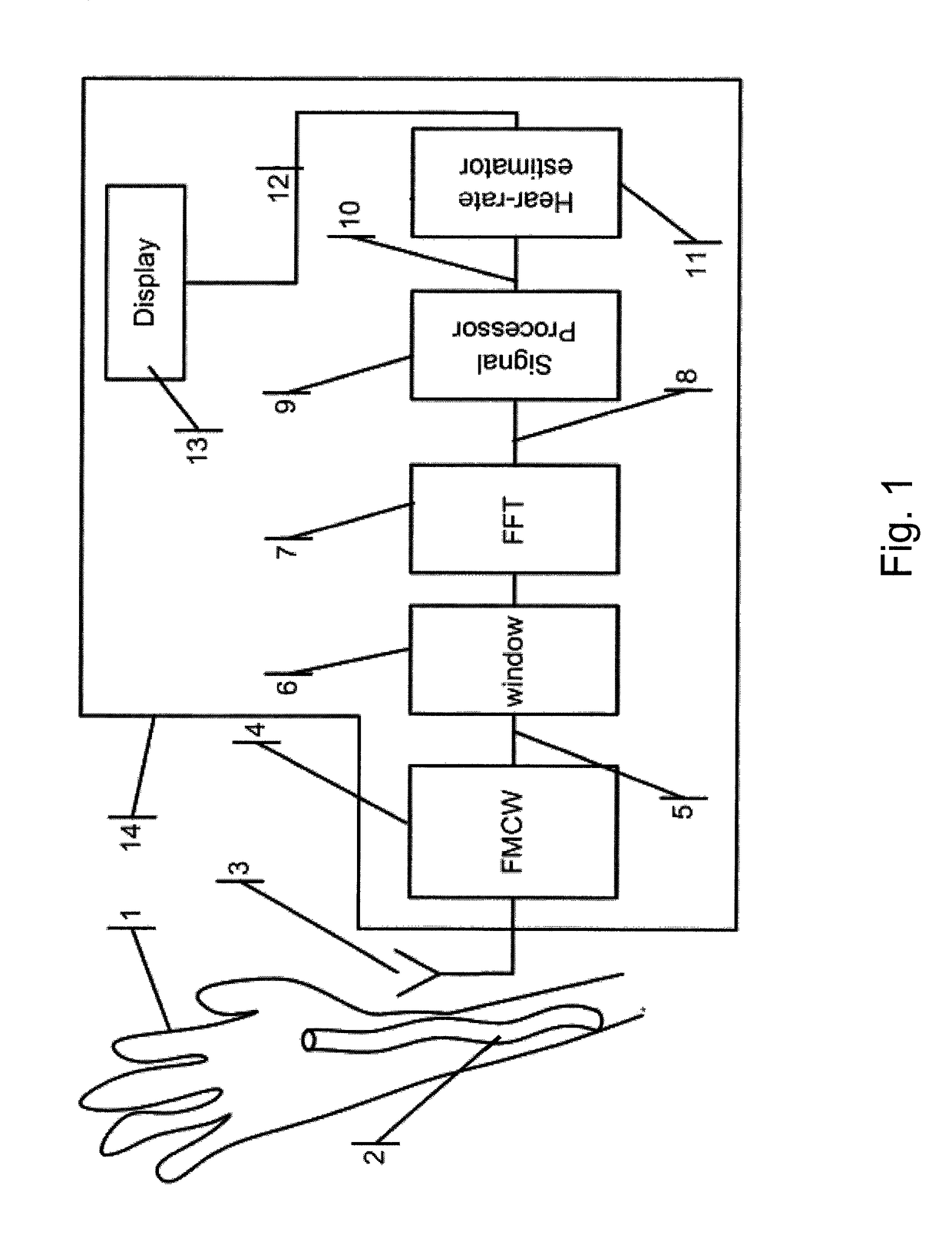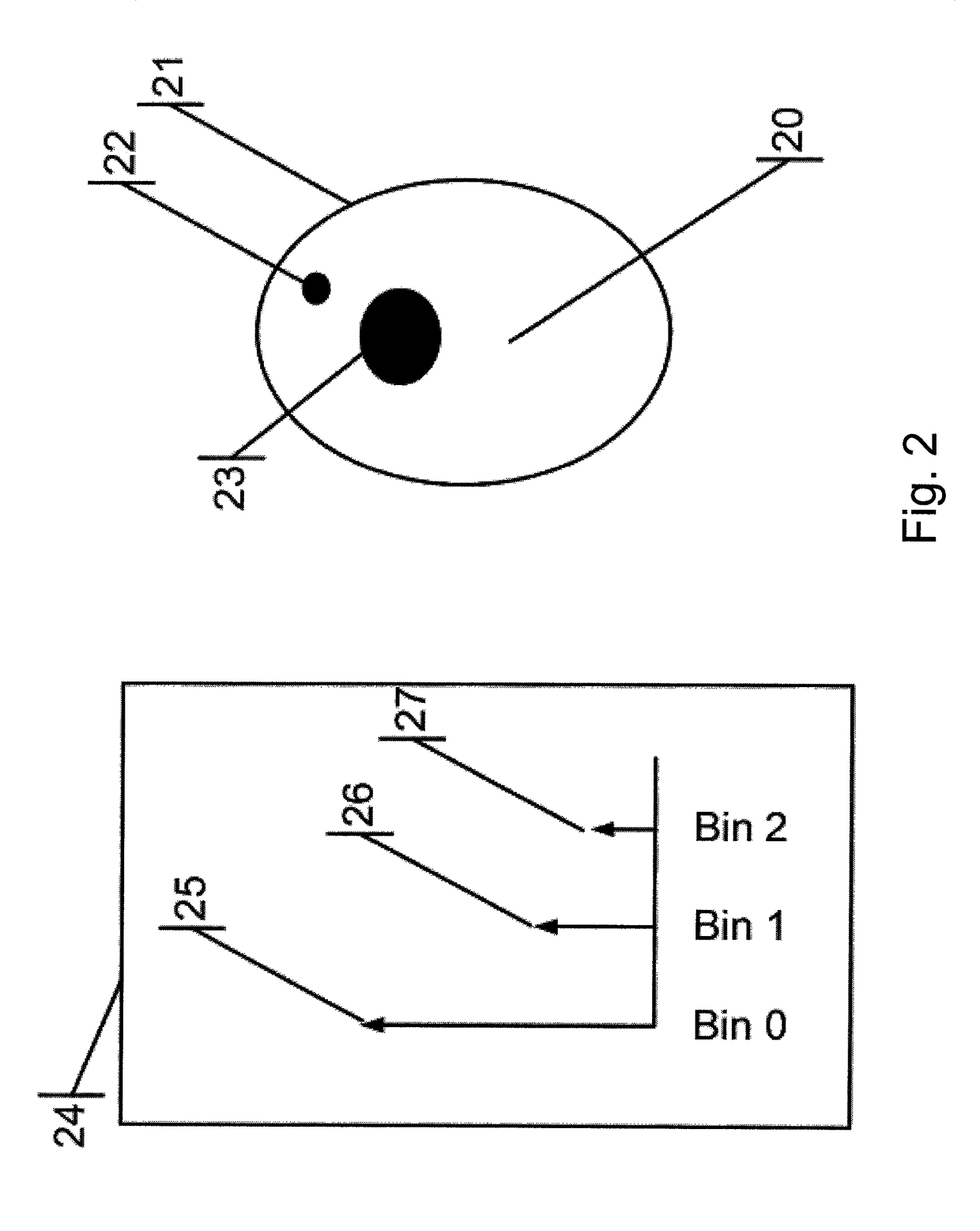Microwave contactless heart rate sensor
a heart rate sensor and microwave technology, applied in the field of contactless heart rate sensors, can solve the problems of inconvenient wearing of the chest strap associated with this type of collar strap, intermittent pulse rate measurement, and too week-long reception of ecg signal
- Summary
- Abstract
- Description
- Claims
- Application Information
AI Technical Summary
Benefits of technology
Problems solved by technology
Method used
Image
Examples
Embodiment Construction
[0050]The sensor proposed by the present invention measures the variations in the blood volume flowing through the artery, by means of a microwave sensor, to produce a continuous reading of the heart-rate. The measurement is insensitive to rhythmic relative movement of the sensor and subject, making it suitable for performing accurate heart-rate measurements, while the user is in training.
[0051]In a preferred embodiment, the measurement is performed on a human wrist, where the artery diameter varies by approximately 10% of its nominal value of approximately 2.5 mm during the pulse cycle.
[0052]The heart-rate sensor is located on a relevant body part, for example a limb above the artery to be measured. The proposed sensor transmits a microwave signal into the artery. The amplitude of the signal reflected from this artery depends on its instantaneous diameter, which in turn, represents the instantaneous blood pressure. Monitoring the rhythm or frequency of this reflection allows estima...
PUM
 Login to View More
Login to View More Abstract
Description
Claims
Application Information
 Login to View More
Login to View More - R&D
- Intellectual Property
- Life Sciences
- Materials
- Tech Scout
- Unparalleled Data Quality
- Higher Quality Content
- 60% Fewer Hallucinations
Browse by: Latest US Patents, China's latest patents, Technical Efficacy Thesaurus, Application Domain, Technology Topic, Popular Technical Reports.
© 2025 PatSnap. All rights reserved.Legal|Privacy policy|Modern Slavery Act Transparency Statement|Sitemap|About US| Contact US: help@patsnap.com



